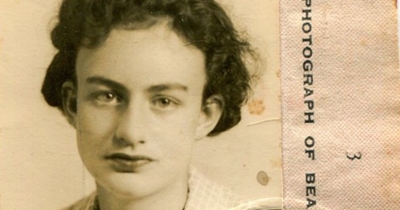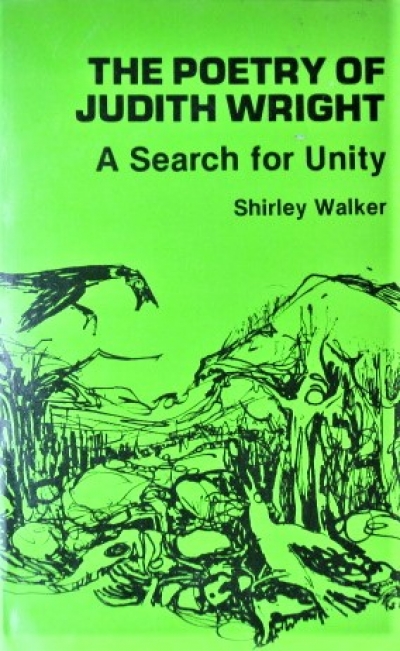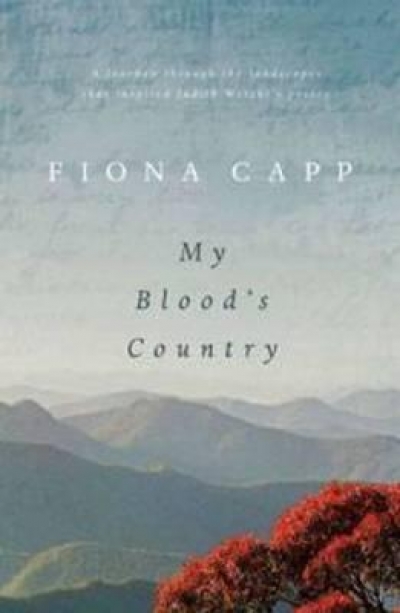Judith Wright
This week on The ABR Podcast, Georgina Arnott discusses the dilemmas of writing an entry on Judith Wright for the Australian Dictionary of Biography. Georgina Arnott is the author of The Unknown Judith Wright, editor of Judith Wright: Selected Writings, and Assistant Editor at ABR. Listen to Georgina Arnott’s ‘“Shimmering multiple and multitude”: Keeping up with Judith Wright’, published in the January-February issue of ABR.
... (read more)A year before her death in 2000, Judith Wright’s autobiography Half a Lifetime was published. The phrase ‘female as I was…’ peppered her stories. Miles Franklin’s Sybylla Melvyn had been a childhood idol. Wright conceded that Sybylla’s use of a stockwhip to assert power might have seemed ‘a little over the odds’. Then: ‘but if you had to?’
... (read more)The Poetry of Judith Wright: A search for unity by Shirley Walker
In one way, this is a book to unnerve the teaching academic: it is so eminently cribbable. As a ‘handbook’ of Wright’s poetry, it ranges widely rather than intensively, offering lucid expositions and firmly delivered judgements. If these latter are sometimes, by the nature of the book, more asserted than demonstrated, they nonetheless seem usually sound and sensible: the lines quoted from ‘The Watcher’ do indeed ‘attempt, and fail, to wrest a response from the stereotyped symbols of the matriarchate’; ‘Christmas Ballad’ is banal; Fourth Quarter does represent ‘a newer and more vigorous poetic world’ than Alive.
... (read more)Georgina Arnott’s 2016 biography The Unknown Judith Wright was an absorbing exercise in discovering the facets of Judith Wright’s early life and formative experience that were unknown, hidden, or forgotten, by biographers as well as by Wright herself. It was a revealing study of a writer who had a love-fear relationship with the projects of biography and autobiography. In the 1950s, Wright wrote loving, admiring histories of her pioneering family, but in her autobiography, Half a Lifetime, published in 1999, the year before her death, she began: ‘Autobiography is not what I want to write.’ There were good reasons for this. There were the formal challenges of life writing – the person writing is not the person written about – but also what Wright had discovered, in her archival research for her rewriting of her family history, about her Wyndham colonial ancestors’ role in Aboriginal dispossession, and violence.
... (read more)Literary biographers and their intended subjects at times agree and at times disagree about the stories they think should be told. J.D. Salinger and Vladimir Nabokov – the one, fastidious ...
... (read more)Nine Lives: Postwar Women Writers Making Their Mark by Susan Sheridan
Susan Sheridan’s Nine Lives, a ‘group biography’, analyses the life stories and literary achievements of nine Australian women writers. The purpose, according to Sheridan, is not only to rediscover the life story of each, but also, by exploring their publishing and aesthetic context, to create a ‘fresh configuration’ of our literary history.
... (read more)My Blood’s Country: In the footsteps of Judith Wright by Fiona Capp
Late in My Blood’s Country, Fiona Capp describes a dream that Meredith McKinney had after the death of her mother, Judith Wright, poet, activist, and the subject of Capp’s book. In the dream, McKinney is at Calanthe, the Queensland home where she lived with her mother and father, philosopher Jack McKinney. A literary festival is under way. In the front room of the house, the study where Wright wrote her poems, scholars are giving papers about her work. McKinney, aware that her reactions are being scrutinised, is careful to react generously. The group moves from room to room, into the more private spaces of the home, Meredith feeling compelled all the while to be gracious in the face of this invasion. An exhibition in her parents’ bedroom centres on a life-size wax dummy of Wright, said to be wearing her clothes, though actually wearing something McKinney recognises as part of an old curtain. As she notices more mistakes in the display, one of the dummy’s arms falls off, and it is suddenly clear that the dummy is in fact her mother’s corpse.
... (read more)Literary Activists: Writer-Intellectuals and Australian Public Life by Brigid Rooney
While rehearsing in Martin Place for the recent Sydney Festival, my daughter found herself dancing on a plinth while a heckler below chanted ‘Wanker!’ throughout. On another platform, her fellow artists, all of them performing their intricately choreographed work, endured the calls of another passer-by, ‘You’re so predictable!’ In Australia, everybody’s a critic.
... (read more)With Love and Fury edited by Patricia Clarke and Meredith McKinney & Portrait of a Friendship edited by Bryony Cosgrove
Judith Wright and Barbara Patterson met at a gathering of the Barjai group, a Brisbane salon for young poets and artists, when Judith was almost twice Barbara’s age. Judith had not yet published her first collection, The Moving Image (1946). She read some poems and Barbara was magnetised.
... (read more)Early last year, Phillip Adams interviewed the British author Pat Barker on his radio programme, Late Night Live. Pat Barker is a novelist who has journeyed into history, most famously in her Regeneration trilogy about World War I, where she fictionalises real, historical individuals. Adams asked her: ‘Which is better at getting at the truth? Fiction or history?’ Her answer was: ‘Oh, fiction every time.’ Barker is a novelist for whom violence and the fear of violence has been a recurrent, powerful theme. She argued that fiction allowed her to ‘slow down’ the horror so that she and her readers could think about it as it happened. In real life she felt that violence was often so swift and shocking that all one could do was recoil. Fiction gave her freedoms that helped her to convey truth.
... (read more)








